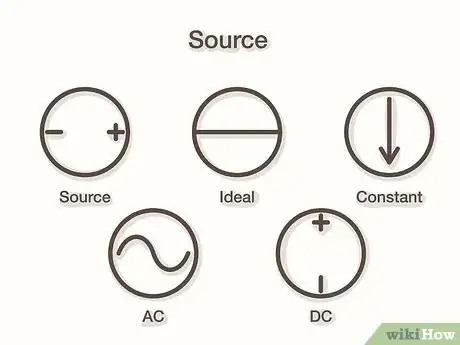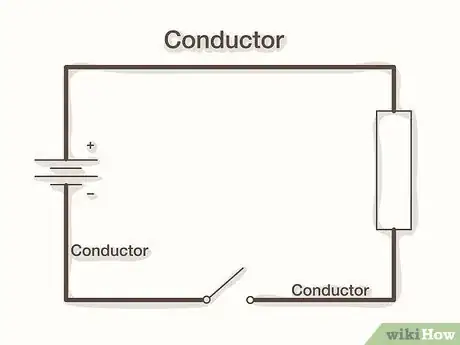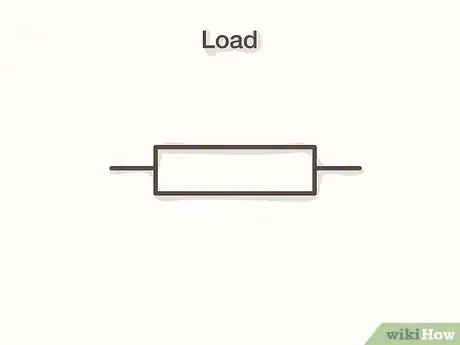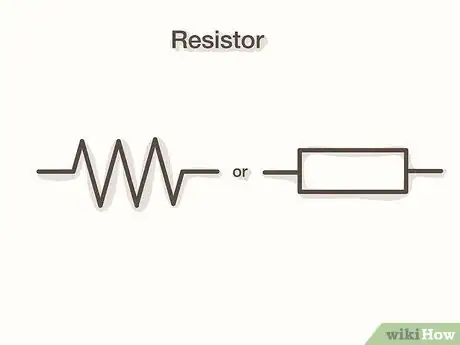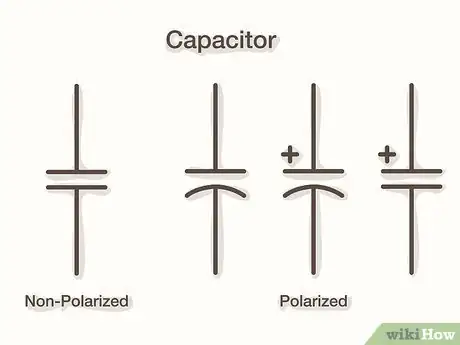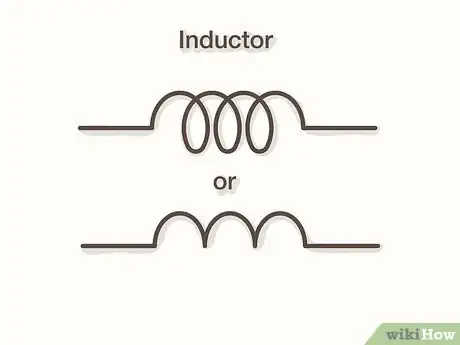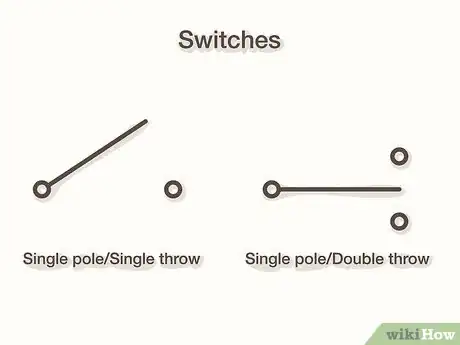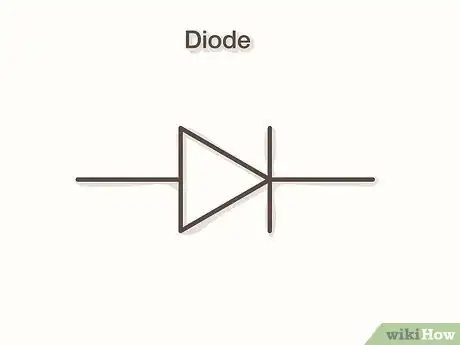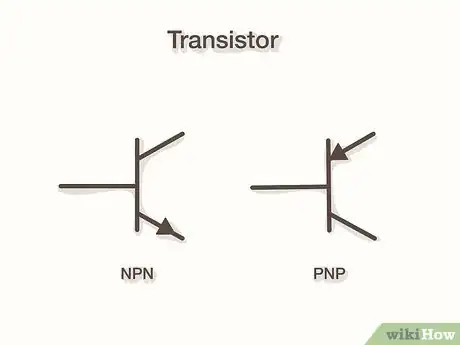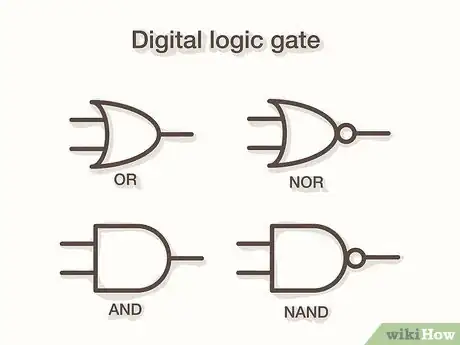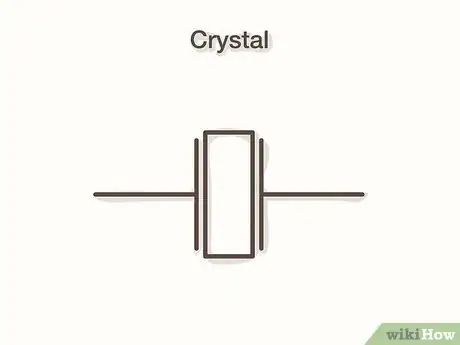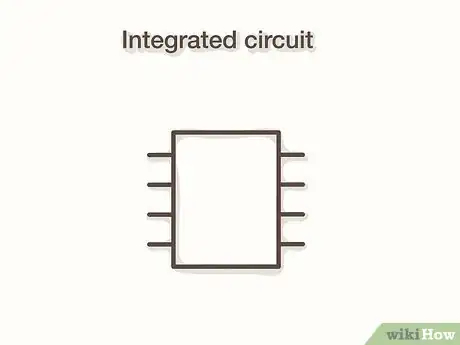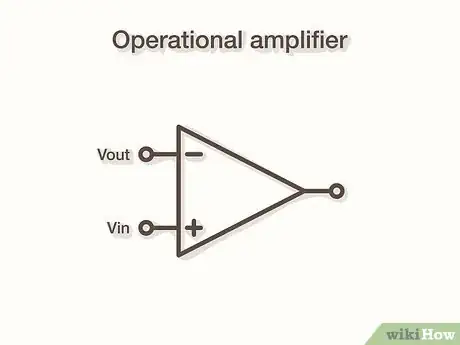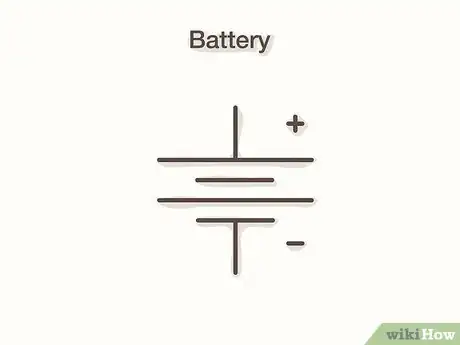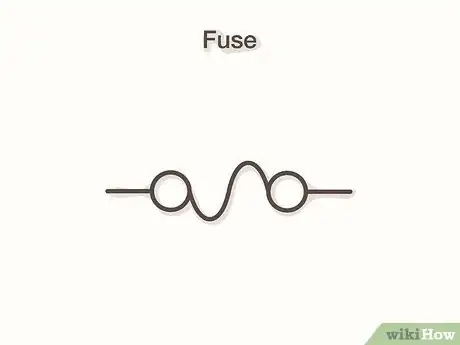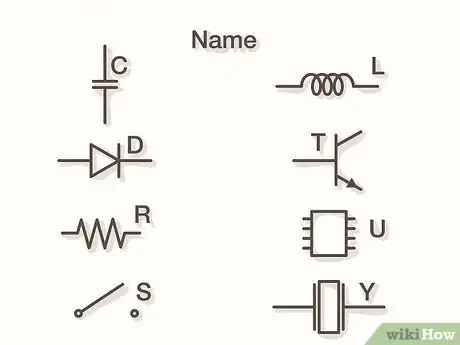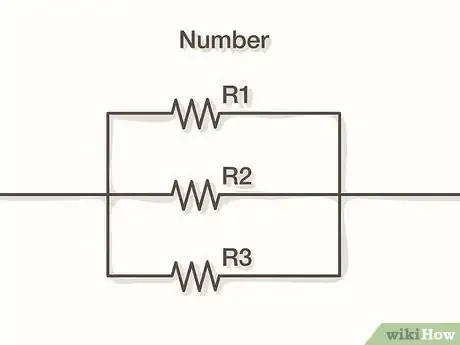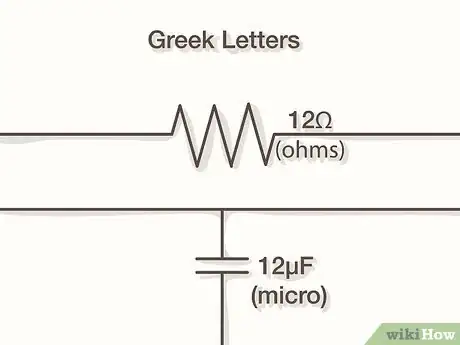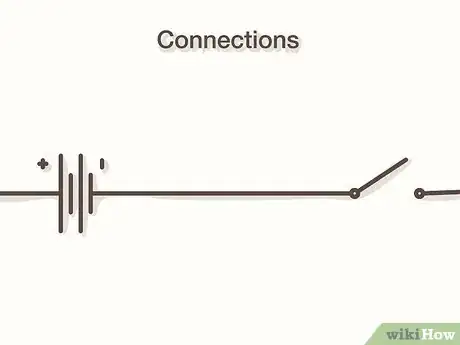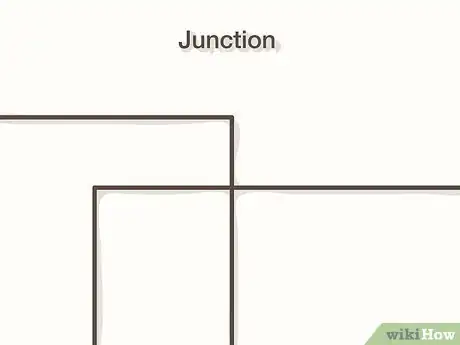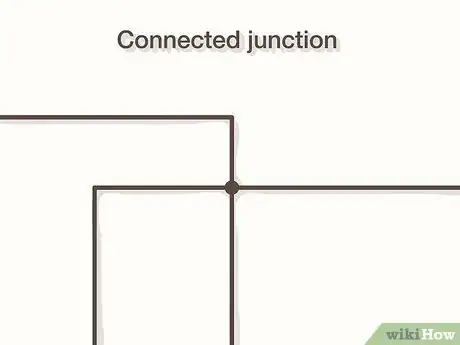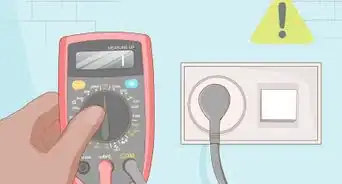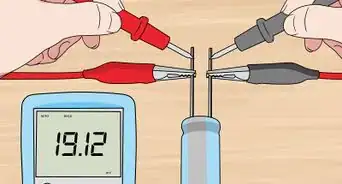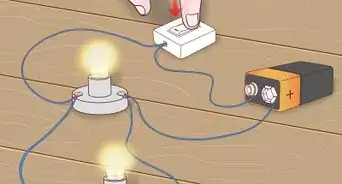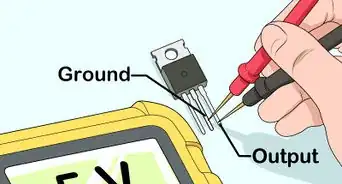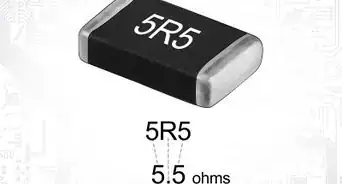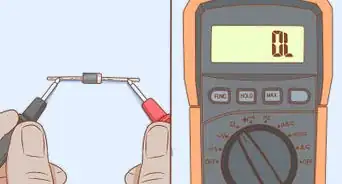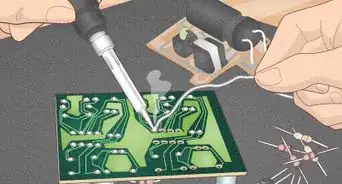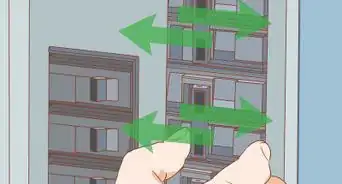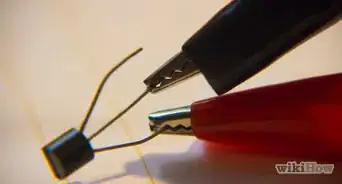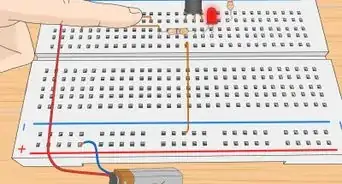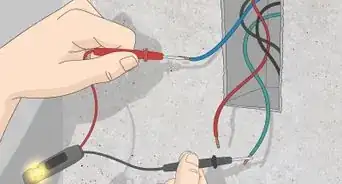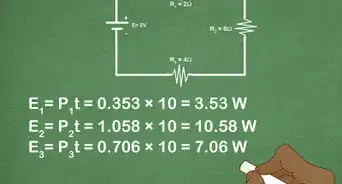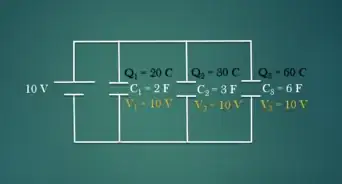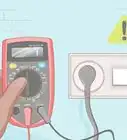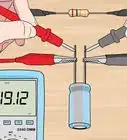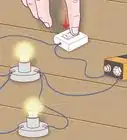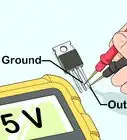This article was co-authored by Mantas Silvanavicius and by wikiHow staff writer, Janice Tieperman. Mantas Silvanavicius is a Licensed Electrician and the Owner of M+S Electric based in Las Vegas, Nevada. With more than 20 years of experience, he specializes in home electrical installations, testing, and wiring. Mantas and his team have completed projects for companies such as Seiko and Springhill Suites by Marriott. M+S Electric is licensed, bonded, and insured.
There are 11 references cited in this article, which can be found at the bottom of the page.
wikiHow marks an article as reader-approved once it receives enough positive feedback. In this case, 100% of readers who voted found the article helpful, earning it our reader-approved status.
This article has been viewed 209,651 times.
Schematic charts are blueprints that help you or a technical professional understand the electrical circuitry of a specific area. These charts can seem overwhelming at first, but they’re simpler to understand once you identify and sort out the different symbols that are used. While schematics require some basic knowledge of electrical hardware, you can gain a lot of new insights into your home or property by successfully reading and analyzing your own document!
Steps
Assessing Basic Circuit Components
-
1Look for circles filled with symbols that signify the power source. Scan over your schematics to figure out where your electrical currents are generated. Note that standard power sources are labeled with a circle that’s filled with a plus or minus sign, while an “ideal” source looks like a circle with a horizontal line splitting it in half.[1]
- If a power source has an alternating current (AC), you’ll see a squiggly line drawn in the middle of the circle. If the power source has a direct current (DC), you’ll see a plus and minus sign on the top and bottom of the circle, respectively.
- Constant power sources are indicated with a downward facing arrow in the middle of the circle.
- The power source sends different types of electrical currents throughout the circuit.
-
2Understand that straight lines signify conductors. Look around your schematic for horizontal and vertical straight lines in a variety of lengths and sizes. Note that these lines represent conductors, which are the different wires that make up the circuit. Check for the complete loops that the conductors form, which allow electricity to flow throughout the circuit.[2]
- Conductors aren’t represented by any type of fancy symbol.
Advertisement -
3Identify connected rectangles as electrical loads. Look for conductors and resistors creating a completed rectangle, or circuit. Search for specific labels that specify “V-Out,” which demonstrates how much energy the circuit uses.[3]
- Electrical loads might be difficult to identify in complex schematics. Try looking up pictures of simple electrical loads to get the basic idea.
-
4Identify resistors, note that resistors are marked by a zig zag line or rectangle. Scan over your schematics and look for any distinct blocks or angled lines in the plans. You might see different notations for resistors, depending on the design style of the schematic. Don’t be surprised if you see this symbol throughout the document—since resistors work to control the amount of electricity used in a given circuit, they’re very common and necessary to any functioning wiring system.[4]
- Variable resistors look like a zig zag line with a diagonal line going through the center.[5]
-
5Identify capacitors as a stack of upright and inverted “T” shapes. Search for a collection of lines within your schematic that are stacked and condensed in a single area. While other symbols, like the battery, have this type of design, note that capacitors look like an upside-down “T” placed on top of a regular “T,” with a horizontal gap between both.[6] Since capacitors hold onto an electrical charge in the circuit, you’ll see this symbol frequently in your schematics.
- You might see a plus sign in the top left corner of the capacitor symbol. This indicates that the capacitor is polarized.
- Some capacitors are made with curved horizontal lines.
-
6Note that inductors are marked with a curved or curly line. Search for squiggled or coiled lines condensed in a single area.[7] Note that inductors are used to store electricity, and can also send electricity back to other parts of the circuit.[8]
- Physically, inductors are coiled pieces of wire, which explains their shape in the schematic.
Warning: Don’t confuse the inductor symbol with the transformer symbol, which looks like 2 vertical, parallel inductors separated by 2 vertical lines.
-
7Locate switches by finding a series of connected circles and lines. Look for an angled or horizontal line that’s positioned near 2 or more open circles. Remember that simple switches will have fewer lines and circles, while more complex switches can have at least 6 lines and open circles.[9]
- The switch opens and closes the flow of an electric current.
- Some switches might not have open circles at all.
- The lines represent “poles,” while the circles represent “throws.” The most simple switch is known as a “single-pole/single-throw.”
- The open circles represent the terminals in the switch.
Evaluating Components in Advanced Circuits
-
1Find diodes by looking for a triangle next to a straight line. Search for rightward facing triangle along the lines of your schematics. Note that diodes force electrical currents in a single direction, which is why the symbol resembles an arrow. Look for a straight line along the pointed corner of the triangle, which signifies the specific direction that the current is going.[10]
Did you know? LED diode symbols look similar to the traditional icon; however, the straight line at the end of the pointed triangle is more angular.
-
2Note that transistors are 2 angled lines attached to a vertical line. Look for a series of connected lines clustered into 1 area of the schematic. Specifically, search for a short horizontal line that’s connected to a long vertical line. As you’re looking for this symbol, note that transistors switch the current flow of electricity within the circuit.
- Transistors will have 2 angled lines entering and exiting the long vertical line. One of these lines will be an arrow.
-
3Identify digital logic gates as curved rectangles or triangles with lines. If your schematic is more advanced, you might see a digital logic gate, which resembles a curved shape attached to short, parallel lines. Note that a standard digital logical gate has 2 parallel lines attached to the left side of the shape, with a single horizontal line emerging from the right side.[11]
- More complex symbols might have open circles attached to the short lines.
- Digital logic gates help manage multiple inputs, and are used in more complex circuits.[12]
-
4Note that crystals are rectangles flanked by sideways “T”s. If you’re looking for a consistent frequency output in your schematic, look for a tall, open rectangle. Once you find this symbol, check the left and right sides to see if there are sideways “T”s surrounding the rectangle. If you see these lines, then you’ve successfully located your crystal.[13]
- This is also the symbol for oscillators and resonators. All 3 of these items give off frequencies when actively used in a circuit.
- Crystals help connect multiple electronic parts.[14]
-
5Note that integrated circuits are rectangles connected to 8 small lines. Search for a chunky rectangle in your schematics that almost resembles a square. Specifically, look for a shape that resembles a spider and has 4 short lines (or “legs”) coming out of each side. Keep in mind that integrated circuits work as an independent unit within a circuit, and usually play a complex role in your schematics.[15]
- The short lines attached to the box shape are known as “pins.”
-
6Find operational amplifiers by looking for a right-facing triangle. Look for sideways triangles scattered throughout your schematics. Unlike diodes, note that operational amplifiers aren’t attached to any vertical lines. Instead, look for short, horizontal lines attached to the edges of the symbol.[16]
- Operational amplifiers help combine a negative and positive voltage source into 1 output.
- You’ll often see “V-in” and “V-out” labels surrounding the triangle symbol, which indicate where the voltage goes in and out.
- Operational amplifiers have a plus and minus sign on the top and bottom corners on the left side.
-
7Locate the battery by finding a stack of long and short lines. Search for an inverted “T” that’s stacked on top of a shorter horizontal line and a regular “T.” Check in the upper and lower right corners for a plus and minus sign, as well.
- There are gaps between all the lines in the battery symbol.
- Batteries help convert chemical energy into electrical currents.[17]
-
8Search for circles connected with a squiggly line to find the fuse. Scan the schematics for 2 open circles sandwiched between 2 short horizontal lines. Look between these 2 circles to find a squiggle that rises and falls from left to right.[18]
- Fuses prevent circuits from burning out from too much current.
- Batteries serve as an extra energy source in the circuit.[19]
Reading Abbreviations Correctly
-
1Label common electrical components by their first letter. Look beneath or next to different schematic symbols to confirm their use and purpose within the circuit. Note that resistors, capacitors, diodes, and switches are all labeled with the first letter of their name, while transistors are marked with the letter “Q.”[20] Pay attention to crystals and oscillators, as well as integrated circuits and inductors—these are noted with the letters “Y,” “U,” and “L,” respectively.[21]
- Fuse, hardware, and transformer are all labeled with the first letter of their name.
- Battery is referred to as “B” or “BT.”[22]
-
2Use numbers to identify more than 1 electrical component. Zoom in on a specific section of your schematic to examine the different labels for the electrical components. If your schematic is especially complex, you’ll see numbers next to the letter abbreviation. Keep track of these labels to understand which component is which.[23]
- For example, if you see “R1,” “R2,” and “R3” in 1 area of your schematic, it means that there are 3 resistors.
-
3Substitute “ohms” and “micro” with Greek letters. Keep an eye out for the Greek letters “mu” and “omega” in different schematic labels. Note that the “omega” symbol stands for “ohms,” while “mu” equals “micro.”[24]
- For instance, the label 12μF equals 12 microfarad.
Analyzing Different Circuit Connections
-
1Look for components connected by straight or vertical lines. View your schematics as an interconnecting puzzle, focusing specifically on which components connect with one another. If you see a straight line going between 2 separate components, then you can know for sure that those 2 elements are connected in the circuit.[25]
- For example, if you see a straight horizontal line going between a battery symbol and a switch symbol, you can know that those components are connected.
-
2Identify junctions as multiple connected lines. Look for lines that split into multiple branches, connecting to other elements of the circuit. Refer to these lines as junctions, as they allow multiple components to interconnect and work together.[26]
- If you ever feel overwhelmed looking at many overlapping lines, try breaking the schematic into smaller chunks.
-
3Identify connected junctions with a dot in the center. Look for overlapping or connected lines that are marked with a closed, filled dot. If you see this dot, you can know for sure that these lines are all connected to one another. If you don’t see this dot, note that the lines are overlapping, but not connected.[27]
- Junctions identify where different electrical lines cross over one another. Some of these lines are connected, while other lines just pass one another.
Did you know? There are different design formats for schematics. Some documents use a closed dot or lack thereof to indicate a connected and disconnected junction. Other schematics will use overlapping lines and lines with small curves to indicate this difference.
Expert Q&A
-
QuestionWhat are the 5 most common symbols used for an electrical schematic diagram?Mantas SilvanaviciusMantas Silvanavicius is a Licensed Electrician and the Owner of M+S Electric based in Las Vegas, Nevada. With more than 20 years of experience, he specializes in home electrical installations, testing, and wiring. Mantas and his team have completed projects for companies such as Seiko and Springhill Suites by Marriott. M+S Electric is licensed, bonded, and insured.
Licensed ElectricianCoils, resistors, capacitors, contactors, and relays are 5 of the most common symbols used for an electrical schematic diagram. -
QuestionWhat are the instruments used to detect fault in any of electronic devices?
 Community AnswerA digital multimeter is used to read voltage, current, resistance, continuity, and capacitance on the slightly higher priced meters. Oscilloscopes read and display the wave signal patterns going through the circuits, as well as the frequency, and other functions depending on the cost of the osciloscope.
Community AnswerA digital multimeter is used to read voltage, current, resistance, continuity, and capacitance on the slightly higher priced meters. Oscilloscopes read and display the wave signal patterns going through the circuits, as well as the frequency, and other functions depending on the cost of the osciloscope.
References
- ↑ https://www.edrawsoft.com/read-electrical-schematics.php
- ↑ https://www.ck12.org/book/CK-12-Physical-Science-For-Middle-School/section/23.3/
- ↑ https://energyeducation.ca/encyclopedia/Electrical_load
- ↑ http://www.madlab.org/electrnx/lesson2.html
- ↑ https://www.allaboutcircuits.com/technical-articles/understanding-schematics/
- ↑ https://www.allaboutcircuits.com/technical-articles/understanding-schematics/
- ↑ https://www.allaboutcircuits.com/technical-articles/understanding-schematics/
- ↑ http://macao.communications.museum/eng/exhibition/secondfloor/MoreInfo/2_3_6_ResistanceInductance.html
- ↑ https://www.edrawsoft.com/read-electrical-schematics.php
- ↑ https://www.allaboutcircuits.com/technical-articles/understanding-schematics/
- ↑ https://www.edrawsoft.com/read-electrical-schematics.php
- ↑ http://www.ee.surrey.ac.uk/Projects/CAL/digital-logic/gatesfunc/index.html
- ↑ https://www.allaboutcircuits.com/technical-articles/understanding-schematics/
- ↑ https://cristales.fundaciondescubre.es/?page_id=2120
- ↑ https://www.allaboutcircuits.com/technical-articles/understanding-schematics/
- ↑ https://www.allaboutcircuits.com/technical-articles/understanding-schematics/
- ↑ http://www.qrg.northwestern.edu/projects/vss/docs/power/1-what-are-batteries.html
- ↑ https://www.allaboutcircuits.com/technical-articles/understanding-schematics/
- ↑ https://www.bbc.co.uk/bitesize/clips/z7ys34j
- ↑ https://makezine.com/2011/01/25/reading-circuit-diagrams/
- ↑ https://www.edrawsoft.com/read-electrical-schematics.php
- ↑ https://www.allaboutcircuits.com/technical-articles/understanding-schematics/
- ↑ https://www.edrawsoft.com/read-electrical-schematics.php
- ↑ https://makezine.com/2011/01/25/reading-circuit-diagrams/
- ↑ https://www.edrawsoft.com/read-electrical-schematics.php
- ↑ https://makezine.com/2011/01/25/reading-circuit-diagrams/
- ↑ https://makezine.com/2011/01/25/reading-circuit-diagrams/
